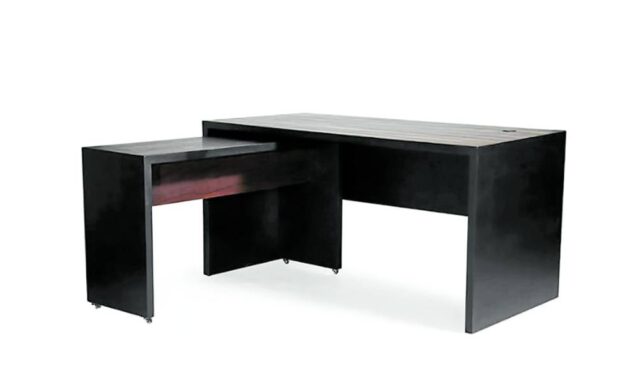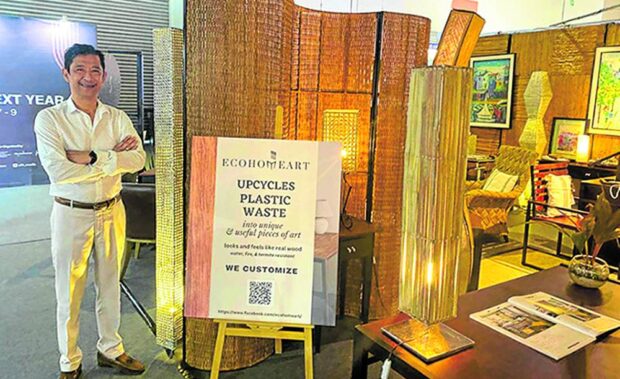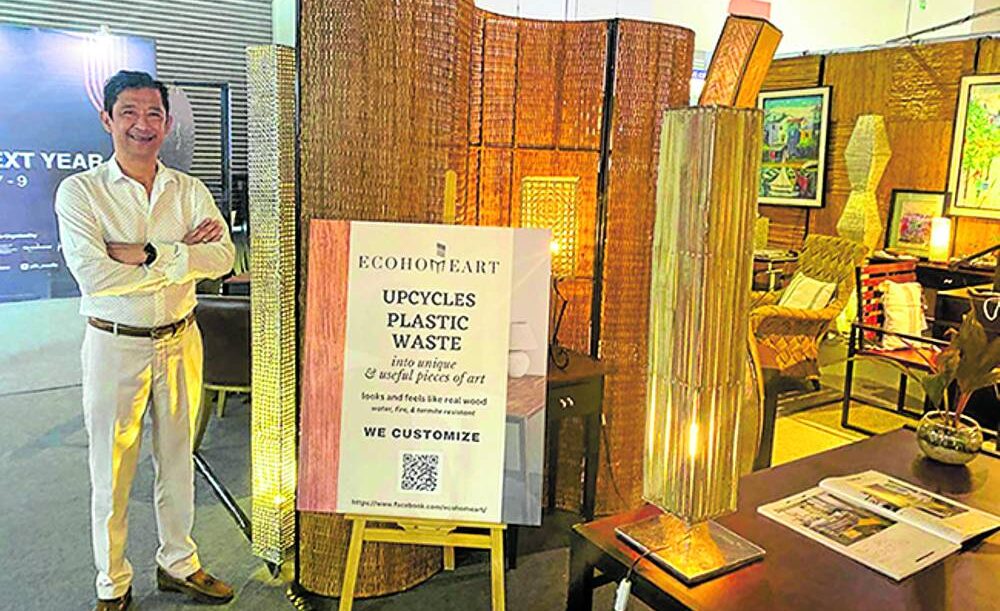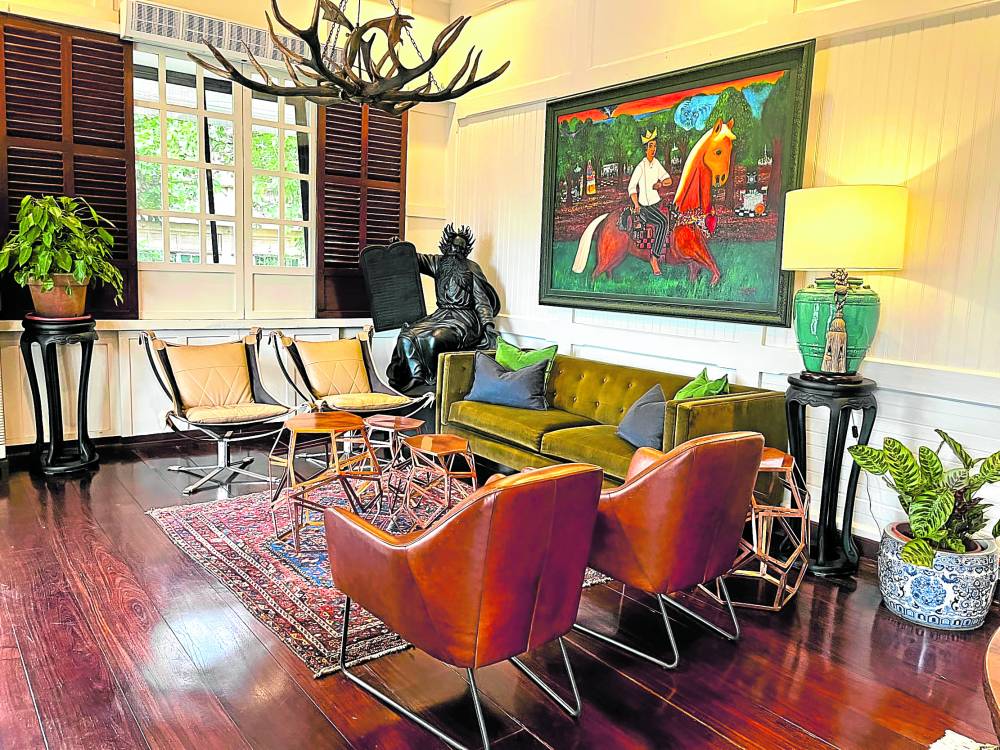Furniture designer and eco warrior Noel Tañada has come up with a stylish solution to reduce plastic waste. Shampoo sachets and junk food packets that could otherwise clog waterways and endanger ecosystems are upcycled into functional and attractive objects.
Tañada is arguably the first Filipino creative to produce and market furniture and accessories built entirely from ocean debris that have been fabricated into recycled plastic lumber and plywood.

“We combined the plastics with aluminum and paper wastes in this board. It looks like the regular 4 feet by 8 ft plywood,” says Tañada. The product, named Ecomarine, is distributed by one of his companies, Alpha District Development Solutions. This undertaking of using debris as design material fosters more collection of plastic litter.
Smaller in size, the faux lumber sheets are manufactured from 100-percent rigid plastic for unyielding strength while the faux plywood is a composite of elastic plastic and other waste products. The plastic plywood, albeit softer, is versatile as it is used to make tables, chairs, benches, drawers and interior surface treatments. The plastic lumber is crafted into crates, pallets and trays.
Upcycling
“I came up with new products for commercial use. The furniture won’t get eaten by termites. They are waterproof, fire retardant and insect-proof,” says Tañada.
His condo in Muntinlupa has been renovated into a showroom wherein the walls are made of recycled plastic plywood. “After the condo was vacated, the place was full of termites. I replaced the wood on the floor and wall with our upcycled plastic boards. I don’t have to worry for the rest of my life. The interiors won’t get affected by rain, get warped by the heat or eaten by termites,” he says.
He discovered the possibilities of plastic when a supplier created a sheet that resembled plywood but was comprised of plastic wastes.

The product complemented the vision of Conservation of Ocean Resources and Aquatic Life (Coral). Formed by Tañada and his wife, Michelle, this nonprofit organization is involved in coastal cleanups and protects marine life. While extracting debris at the Dolomite beach, the designer was amazed by the volume and variety of the trash.
“On the shore, I saw the same colors on the debris such as silver, orange, blue, yellow and reds that were on the recycled plastic board,” he recalls.
When Coral conducts coastal cleanups—the process of collecting litter from the waters and recording the quantity and quality of trash, the wastes are sold to the supplier. In turn, the litter is cleaned, pulverized, melted, squeezed into pellets and remolded. Once the raw materials have been manufactured into plastic wood boards, Tañada buys from the supplier and shapes the sheets into pieces of functional art.
Plastic rafts
Tañada learned about this upcycling in the United States while working for such well-known brands as Drexel Heritage, Ethan Allen, Ralph Lauren and Crate & Barrel. He has variety of wood finishes such as wenge that could be produced on a plastic wood board.
On coming home, he established EcoHome Art, the main brand for furniture, lighting and accessories using upcycled waste products. Water hyacinths, which obstruct waterways and disrupt the wildlife, and discarded doypacks, which work like plastic, are upcycled into upholstery for love seats, lamp shades, hampers and planters. Palochina from discarded crates become benches, furniture frames and tables. Reinforced bars appear in Tañada’s edgier designs.
His latest line of upcycled waterway debris is called Wasto (Tagalog for “correct”), which makes a pun on “waste.” This line is the designer’s way of reducing plastic. “Wasto is a brand for essentials such as street benches, waste bins and flooring,” he says.

Aside from home and office furniture, Tañada has created other uses for plastic wastes. The Ecomarine sheet is the main material for the speaker’s podium at a beauty contest. Combined with plastic lumber, the Ecomarine board is used to make trash cans and rafts. To make it a rescue vessel, the raft is supported by a structural foundation—a plastic-infused palette and powered by solar lamps which he designed.
What’s next for Tañada? He is eyeing upcycled agricultural waste. —CONTRIBUTED INQ









































